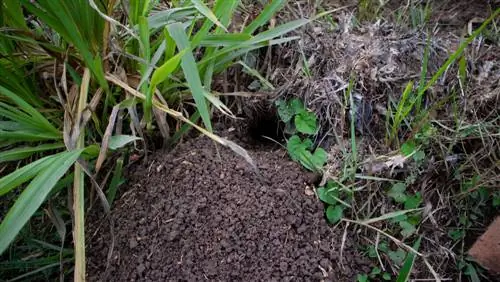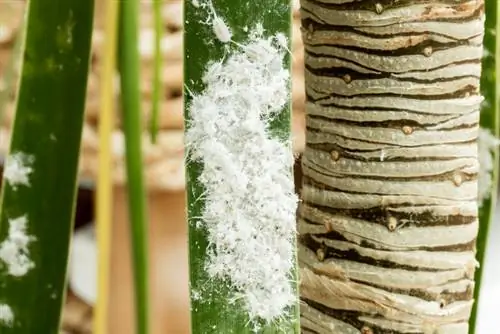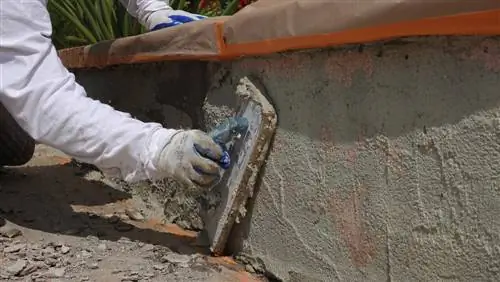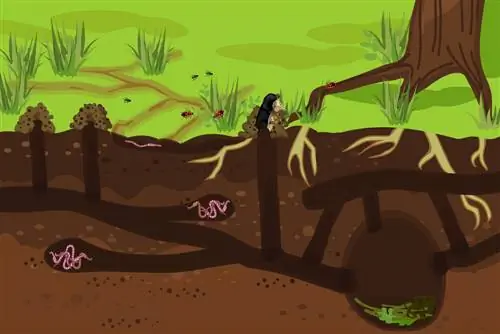- Author admin [email protected].
- Public 2023-12-16 16:46.
- Last modified 2025-01-23 11:22.
Voles dig underground tunnels in which they live, move around and store supplies. The tunnels can be surprisingly long and branched. Find out below how to recognize vole burrows and how to distinguish them from moles.
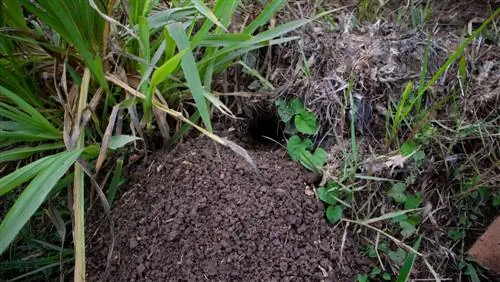
How do I recognize vole burrows?
Vole burrows are underground tunnels that are about 5 cm wide and up to 8 cm high. They can be up to 25 m long and contain a nest lined with soft materials and a pantry. These passages can be recognized by flat piles of earth next to the entrances.
The burrow system of the vole
Voles live alone. The sophisticated tunnel system that they dig all by themselves is all the more impressive. The burrows of the vole are usually around 5cm wide and, depending on the size of the vole species, up to 8cm high. Voles usually create a nest equipped with soft materials and a pantry. A vole burrow can be up to 25m long, and in rare cases even longer.
Pile of earth above the corridors
Voles, like moles, throw up piles of dirt at the entrances to the passages. In contrast to moles, voles rarely dig more than five mounds of earth, which are also significantly shallower than those of moles. Moles usually have their entry hole in the middle of their pile; Vole exits start next to the pile.
Damage caused by voles
Unlike moles, voles don't just cause “visual” damage. Voles are herbivores and will nibble on just about any roots they come across. All vegetables, fruit trees and clematis are particularly popular with voles.
Place traps in corridors
Vole traps are usually placed directly in the aisles. To do this, you need to clear the entrance a little so that the trap fits inside. While vole pincer traps are only inserted into the entrance from above, vole traps and other types of traps must be placed in the aisles. Natural control agents such as stink bombs, plants or manure should also be added directly to the corridors.
Tip
Before you set up a killing trap, you should make sure that your garden resident is really a vole. Moles are protected and may not be killed.

